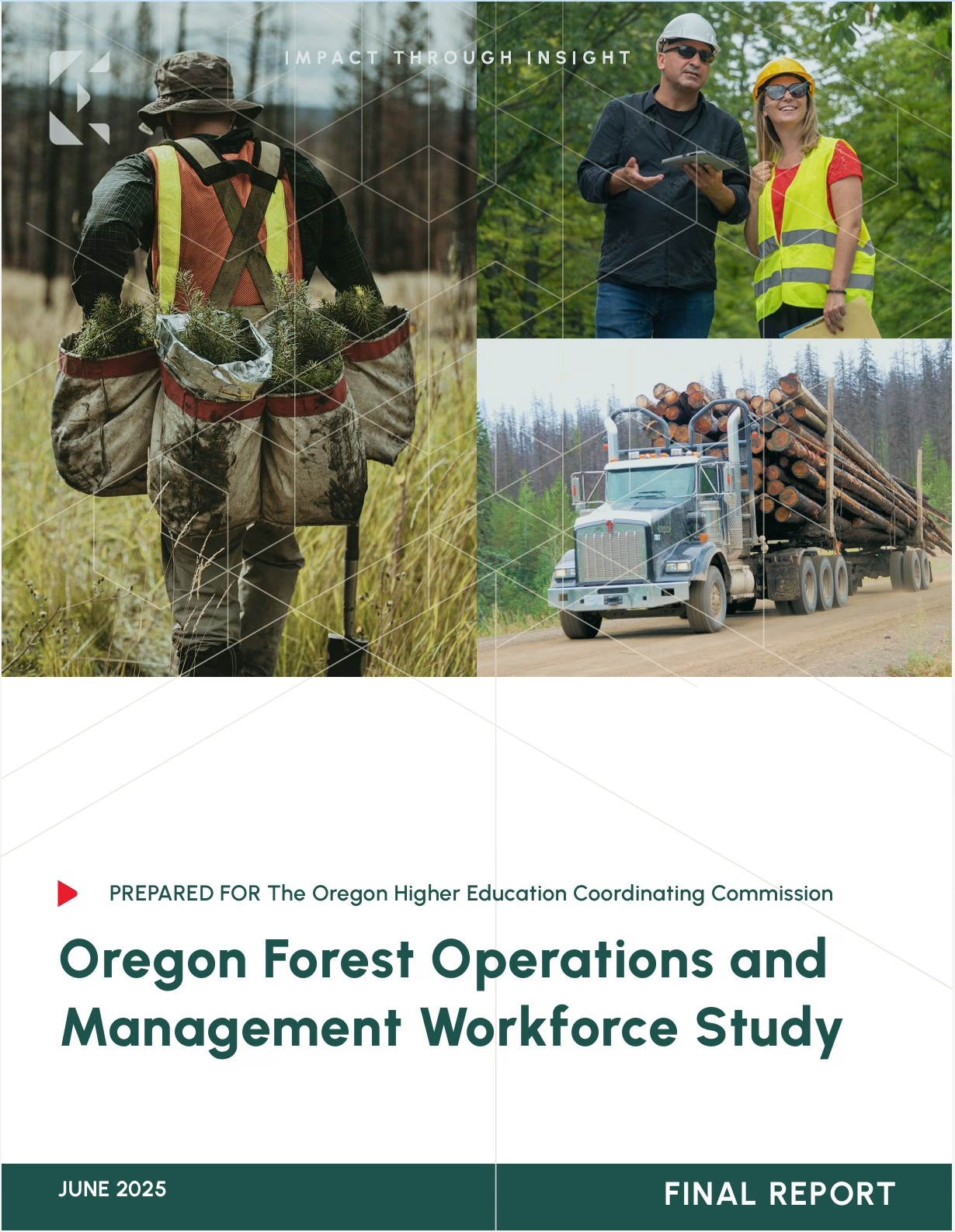Oregon Study Offers Insight—and Urgency—for the Forestry Workforce

Earlier this month, Oregon’s Higher Education Coordinating Commission released a new statewide workforce study, the Oregon Forest Operations and Management Workforce Study (study), that takes an in-depth look at the health and future of Oregon’s forestry operations and management sector. The study was developed with input from many forest sector partners, including state agencies, public institutions, and industry employer representatives. The comprehensive report is a detailed analysis confirming Oregon’s forest sector is central to the state’s economic, environmental, and public safety goals and home to some of the state’s most essential, high-demand, and technically advanced jobs.
The study was authorized by the Oregon Legislature in SB 1552 (2024) and completed by the Higher Education Coordinating Commission. FRA member Associated Oregon Loggers (AOL) led the effort. It focuses on forest contracting workers and in-woods specialists like foresters and engineers. The study does not incorporate the milling and processing infrastructure workforce.
It identifies a strong need to modernize training pathways and expand access to forestry and trades worker careers. It also underscores the importance of workforce readiness in addressing Oregon’s wildfire risk, housing demand, and forest health crisis.
For those of us in the forest sector, many of the findings won’t come as a surprise—but the data helps sharpen the message: we are at a critical point. Without targeted investment in training, education, and workforce development strategies, Oregon risks expanding its disasters instead of addressing them.
Highlights from the Report
- Forest workers are critical public servants and environmental stewards: Forest operators are critical first responders during fire season, and their ongoing capacity to operate in forests to maintain healthy, productive landscapes is tied directly to investments in professional development, continued education, recruitment, and the availability of experienced forestry operations crews.
- The study recommends the state promote the sector and reduce the size of awareness gaps.
- A significant portion of Oregon’s forestry workforce is nearing retirement: One in every eight workers will need to be replaced to maintain the current capacity of the state. This equates to 3400 job replacements annually to meet demand, let alone growing the workforce to scale up to the forest health and housing needs of the state.
- A strong emphasis is placed on the need for more accessible, modernized training, including apprenticeships and stackable credentials that can support on-the-job learning.
- Workforce pipelines are thin: Many high school graduates aren’t aware of forestry career paths, and postsecondary programs are limited in capacity or location. Additionally, only 1-2% of environmental graduates enter the forest sector, indicating that many young people who care deeply about the environment don’t see forestry as a relevant path.
- Workforce strategies should aim to bridge this gap by showing how careers in forestry directly contribute to environmental protection, carbon sequestration, ecosystem restoration, and fire mitigation.
- Oregon is rich with local companies that employ diverse workers. Unlike many other states, Oregon awards a high share of forestry contracts to in-state businesses. Specifically, Oregon supplies many other states with their labor-intensive workforce that relies on legal immigrant guest workers through the H-2B Visa program, indicating it is a critical artery for the sector nationally.
- Workforce programs should continue to stabilize legal pathways for immigrant workers and ensure bilingual training and culturally specific materials are developed to expand this diverse workforce.
What This Means for the Sector & Next Steps
The study represents a significant step forward for the sector, as it is a state-commissioned document that acknowledges our long-standing commitment to delivering more than just timber.
One of the key next steps, and a feature of the study that contractors were unable to address, is a comprehensive workforce gap analysis to better understand what the capacity delta is between fully implementing key state and federal strategies for wildfire mitigation, forest resiliency, mass timber production, and domestic wood supply chains.
Oregon’s forest sector partners will be working towards that goal and crafting strategies to operationalize the other recommendations of the study.
Where to Learn More
You can read the full Oregon Forest Operations and Management Workforce Study on the Oregon Workforce Talent Development Board’s website: Download the Report (PDF)

